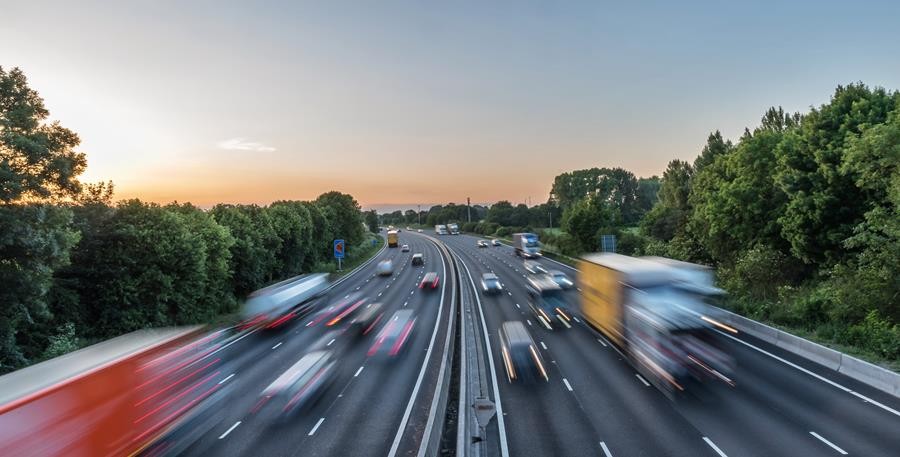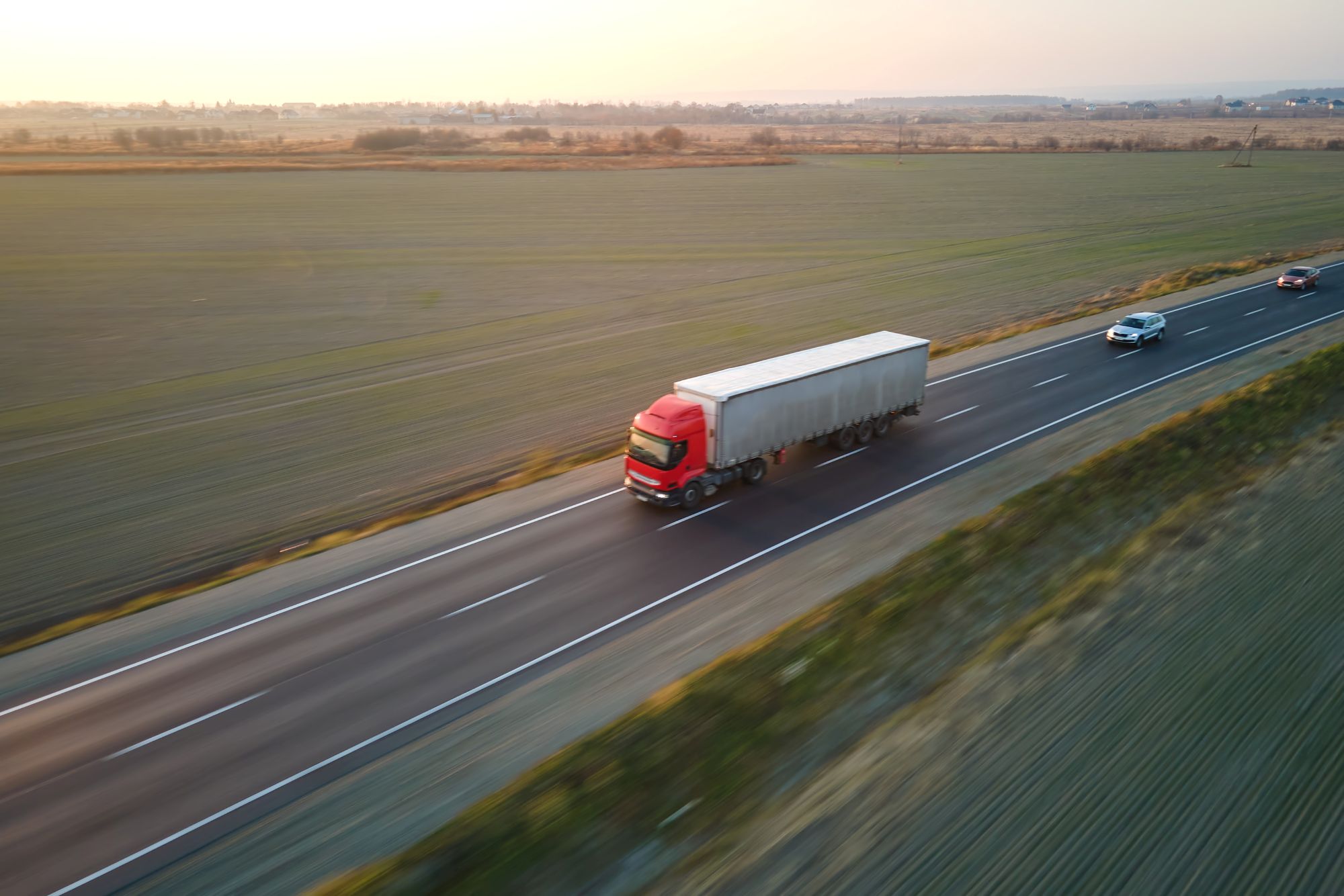
Susie Jones
Cesta k udržitelnosti: Evropský emisní problém v odvětví dopravy
Vytvořeno: 08.08.2024
•
Aktualizováno: 08.08.2024
Zpráva společnosti Clean Technica z roku 2024 odhalila, že více než 25 % emisí ze silniční dopravy v Evropě pochází z odvětví dopravy - přičemž těžká nákladní vozidla jsou zodpovědná za 85 % emisí (zbytek tvoří autobusy a autokary).
Při současném tempu bude samotné odvětví dopravy v roce 2030 představovat téměř polovinu evropských emisí skleníkových plynů - od roku 1990 se emise z dopravy v Evropě stále zvyšují o více než čtvrtinu. Emise v celé ekonomice klesají - nicméně od vrcholu v roce 2007 se odvětví dopravy dekarbonizuje více než třikrát pomaleji (https://www.transportenvironment.org/articles/europes-transport-sector-set-to-make-up-almost-half-of-the-continents-emissions-in-2030)než zbytek ekonomiky.
Co je příčinou rostoucích emisí CO2 v odvětví nákladní dopravy?
Od rozšíření elektronického obchodu a služeb dodávek do domu se výrazně zvýšila poptávka po větším počtu nákladních vozidel na silnicích. Zvýšená poptávka má proto za následek nárůst emisí CO2 v odvětví nákladní dopravy.
Zpráva Clean Technica týkající se tonáže vnitrostátní nákladní dopravy v různých druzích dopravy (silniční, železniční a vodní) odhalila, že silniční nákladní doprava je v Evropě dominantnější než železniční a vodní ve srovnání s jinými geografickými oblastmi (USA a Indie). Ačkoli je Čína více závislá na silniční nákladní dopravě, zpráva odhalila, že země provozuje zhruba 600 000 elektrických nákladních vozidel pro rozvoz zboží.

Jaké plány na snížení emisí CO2 existují v Evropě?
Evropský parlament přijal evropský zákon o klimatu, který má řešit rostoucí emise CO2. Součástí tohoto zákona je zvýšení cíle EU snížit čisté emise skleníkových plynů do roku 2030 na nejméně 55 %, čímž se klimatická neutralita do roku 2050 stává právně závaznou.
V květnu 2024 schválily země EU zákon o snížení emisí CO2 z nákladních automobilů. Nový zákon bude vyžadovat, aby nová těžká nákladní vozidla prodávaná v EU od roku 2040 byla bezemisní - a zároveň prosadí 90% snížení emisí CO2 u nových nákladních vozidel do téhož roku. Výrobci musí prodat velké množství těžkých nákladních vozidel zcela bez emisí CO2 - například elektrických vozidel a vozidel na vodíkové palivo - aby kompenzovali zbývající prodeje vozidel s emisemi CO2.
Jaká opatření mohou manažeři vozových parků přijmout ke snížení emisí CO2?
Správci vozových parků mohou přijmout opatření ke snížení emisí CO2:
Prudké brzdění, rychlá akcelerace a volnoběh mohou zvyšovat spotřebu paliva a emise skleníkových plynů - Přestože sledování chování řidičů může být náročné, technologie umělé inteligence může řidičům a správcům vozového parku poskytovat průběžnou zpětnou vazbu. Další informace o tom, jak AI může pozitivně ovlivnit udržitelnost v odvětví nákladní dopravy.
Flotily se staršími vozidly mohou přejít na hydrogenovaný rostlinný olej (HVO), vodík nebo nákladní vozidla s elektrickým pohonem a výrazně tak snížit emise. Správci vozových parků však musí zvážit vzdálenost, kterou mohou vozidla na alternativní pohon ujet, a finanční dopady.
Účet SNAP umožňuje správcům vozových parků snížit počet ujetých kilometrů - díky více než 600 servisním partnerům, kteří jsou zákazníkům účtu SNAP k dispozici, mohou správci vozových parků plánovat noční zastávky pro své řidiče na trase.
Existuje infrastruktura pro nabíjení elektrických nákladních vozidel?
Podle studie PwC bude do roku 2030 třetina všech nákladních vozidel v Evropě jezdit na elektřinu. Vzhledem k tomu, že společnosti provozující vozové parky podnikají kroky směrem k elektrifikaci, musí být zastávky pro nákladní automobily v celé Evropě schopny uspokojit poptávku po elektrických dobíjecích stanicích.
Zajištění infrastruktury bude pro mnoho zastávek a čerpacích stanic nákladné. Ty, které již nabíječky pro elektromobily mají, však mají dobré předpoklady k tomu, aby využily budoucí vlny elektrických nákladních vozidel. Do roku 2030 vzroste počet veřejných dobíjecích stanic v Evropě na více než 3 600 - EU předložila ambiciózní zákon pro dobíjení s nařízením o infrastruktuře pro alternativní paliva (AFIR). Nařízení AFIR plánuje vybavit hlavní silniční síť dobíjecími stanicemi každých 60 km, což poskytne dostatek energie pro dobíjení a vodíkové kapacity pro 9 % vozového parku nákladních automobilů a autobusů, které budou do roku 2030 bez emisí.
Která evropská země má nejvíce emisí CO2?
V roce 2021 byly Německo, Francie a Itálie zodpovědné za nejvyšší celkové emise skleníkových plynů (GHG) - v rozmezí od 375 000 do 740 000 kilotun CO2. Země s větším počtem obyvatel však produkují více emisí skleníkových plynů - proto pohled na celkové emise skleníkových plynů poskytuje zkreslený obraz.
Při nestranném pohledu na emise se nabízí jiný pohled - Lucembursko, Irsko a Česká republika vyprodukovaly v roce 2021 nejvyšší emise na obyvatele v EU.
Jaký způsob přepravy zboží je nejšetrnější k životnímu prostředí?
Přeprava zboží po železnici je jedním z nejčistších způsobů dopravy, ale přináší i další výhody:
Snižuje dopravní zácpy, což přispívá ke zlepšení kvality ovzduší.
Železnice nabízí rychlejší způsob přepravy zboží a odstraňuje těžké dopravní překážky.
Dalším způsobem přepravy zboží šetrným k životnímu prostředí jsou nákladní vozidla na alternativní paliva. Hydrogenovaný rostlinný olej (HVO) může okamžitě snížit až 90 % emisí skleníkových plynů ve srovnání se standardní naftou v celém životním cyklu výrobku. Společnost Certas Energy HVO stojí za přechodem na čistší alternativu - pomáhá podnikům plnit jejich cíle v oblasti udržitelnosti a podnikat smysluplné kroky k jejich čisté nulové budoucnosti.



